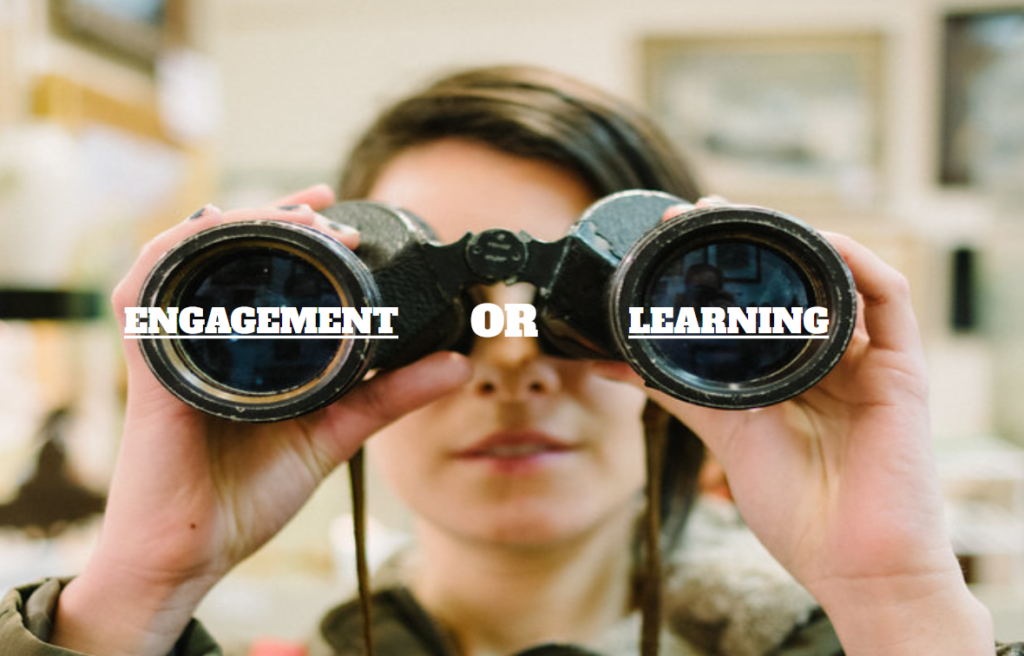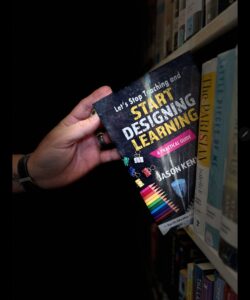I’ve had a lot of conversations with a lot of educators and leaders about engagement. What it is. What it looks like, How to make it happen in the classroom. This also drives a lot of what folks look for when trying to figure out if what’s going on in the classroom is effective or not. There are many out there who, when the question, “What do you look for when you walk into a classroom?” is posed, one of the most popular responses is, “Engagement.” So, let’s talk about engagement as it relates to learning and see if what we look for so vitally really is what we need to be focused on most in the classroom.
All Learning Requires Engagement
That’s the simple fact. Learning requires engagement. The reason we have achievement gaps is that for so long we’ve had an engagement gap. If learners are not engaging in the learning of the day, then they are just in the room, “doing school.” The learning we want from kids is not happening when they are compliantly taking notes or listening to a lecture. The learning of the day happens when learners take on a task that will result in evidence of learning. Learners choose to actively engage in a process that is risky and challenging that eventually produces some sort of tangible product which shows the learning of the day took place. If our learners never really engage in this part of the lesson, very little (if any) real learning takes place.
Not All Engagement Results in Learning
Just because learners are highly engaged in a task, doesn’t mean that learning is happening. Classrooms can have some great, creative activities going on, but the learning can be lost in the mix. All fluff, but no function when it comes to the learning of the day. For example, I visited a middle school once where the class was constructing DNA sequences using pipe cleaners and craft beads. Students were taking a given pattern and replicating it using the beads. In the room of 20 or so kids, I circulated and asked 10 individual students what they were learning today. Everyone’s response was more or less the same. “I don’t really know. I just know I am putting these beads on the pipe cleaners.” The same type of disconnect can happen with any “fun” project. Seductive details have a negative effect size. (-0.33) Nearly a year’s worth of loss of learning potential. Why? Because the factors we have built into our task are too far removed from the learning or we never made the connection between the task and what we wanted them to learn in the first place, that kids are all wrapped up in the fun of the process instead of the function of the product of their learning.
Engagement Can Be Designed to Result in Learning
The good news is that we can design for engagement to happen while also making sure evidence of learning is produced. First, we must ensure that what is being engaged with by learners in class produces visible evidence that the target of the learning of the day was aimed at and worked towards. In other words, our kids need to know what the goal is and how their task is allowing them to demonstrate this goal. Other qualities can be incorporated daily into the task to ensure the learning is getting just as much attention as the engagement. Qualities like choice, collaboration, success criteria, novelty, and others help make what is being engaged with by the learners about the learning. The more we imbed learning, its language, its practice and purpose into everything in the classroom, while also providing relevant, curiosity inducing, engaging tasks, the greater the active learning taking place will be.
Engagement is how we get our learners into learning. It’s how they gain access. Think of it this way. Learning is the main event. The show everyone came to see happen. It is the star. Engagement is the admission ticket. It’s what gets learners in the door in the first place.We have to make sure our kids not just get into the door of the theater, but that they get a chance to see and engage in the show that matters most, learning.


